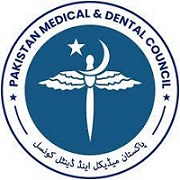FREQUENCY OF MOLAR PREGNANCY AND ITS CONTRIBUTING FACTORS AMONG PREGNANT WOMEN COMING TO TERTIARY CARE HOSPITALS OF LAHORE.
Abstract
Objectives: To determine the incidence of molar pregnancies among women who give birth at Jinnah Hospital in Lahore and to determine various risk factors for molar pregnancy.
Methods: The research method was a cross-sectional analysis. It occurred in Jinnah Hospital's obstetrics and Gynaecology department in Lahore. The research was conducted over the course of six months, from March 6, 2021, to December 2, 2021. 145 people were enrolled in the research. A transvaginal ultrasound was performed on all of the patients, and molar pregnancy and its associated dangers were documented.
Results: Mean age of the patients was 30.8±6.6 years; mean gestational age was 13.3±2.3 week. Majority were multigravida 87 (60%) while 58 (40%) were primigravida. Molar pregnancy was found in 10 cases (6.9%). With advanced maternal age 21% with molar pregnancy, whereas history of previous miscarriage and use of oral contraceptive pills was present in 69.2% and 23% of females with molar pregnancy respectively.
Conclusion: High mother age (over 35), prior early pregnancy abortions, OC usage, rhesus blood type, and family history all contributed risk factors. Molar pregnancies were more common in women who were further along in their pregnancies, had higher beta hcg levels, or had a positive family history.






